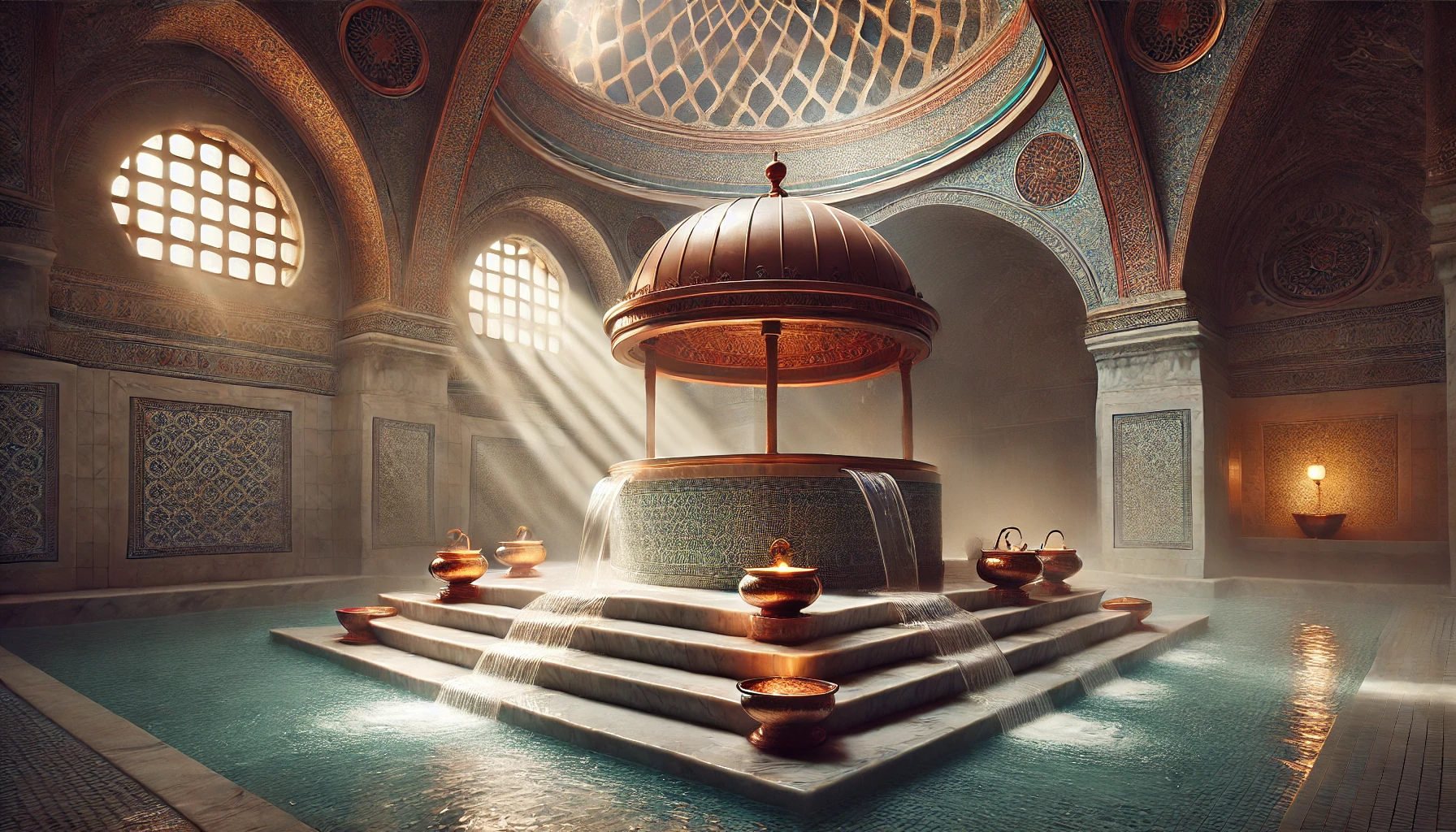
Stepping into a Turkish bath, or hammam, in Istanbul is like taking a journey back in time. These baths have been a cornerstone of Turkish culture for centuries, providing not only a place to cleanse the body but also to refresh the mind and soul. In the bustling heart of Istanbul, hammams offer a perfect blend of history, relaxation, and a deeper connection to the city’s vibrant heritage. Whether you are a local or a traveler, immersing yourself in the tradition of Turkish baths is an essential experience.
The History and Origins of Turkish Baths
Turkish baths, known as hammams, have deep historical roots, dating back to the Roman and Byzantine eras. The Ottomans later adapted the concept, blending Roman bathing traditions with Islamic purification rituals. This unique combination gave rise to the Turkish bath culture, which became an integral part of Ottoman society.
Hammams served multiple purposes beyond hygiene. They were a social space where people gathered to celebrate special occasions, such as weddings or the birth of a child. For many, the hammam was a communal meeting place, and its social importance made it a central part of daily life. Over time, the architecture of these baths evolved, with many featuring grand, dome-shaped ceilings, intricate marble floors, and stunning mosaics. These architectural elements are still visible in some of the most famous Turkish baths in Istanbul today, including the Çemberlitaş Hamamı and Süleymaniye Hamamı.
Modern visitors to Istanbul’s hammams are invited to experience this living history, where centuries-old traditions continue to thrive in the heart of the city.
Traditional Rituals Inside a Turkish Hammam
Stepping into a hammam can feel like entering another world. The ritualistic aspect of the experience is what sets the Turkish bath apart from other forms of bathing. The process is typically divided into several stages, designed to cleanse and rejuvenate the body.
The first stage is the hararet, or steam room, where bathers sit in a warm, humid environment. The heat opens the pores and softens the skin, preparing it for the next step: the göbek taşı. This is a large, heated marble platform in the center of the hammam, where bathers lie down to be scrubbed by a bath attendant. Using a coarse mitt known as a kese, the attendant removes layers of dead skin, leaving the body smooth and refreshed.
After the exfoliation, bathers are treated to a soap massage, where thick, foamy bubbles envelop the body. The combination of heat, scrubbing, and massage leaves the bather feeling thoroughly cleansed, both physically and mentally. The experience concludes with a cooling rinse, allowing bathers to relax and enjoy a moment of serenity.
The hammam ritual is more than just a form of cleansing; it is a deeply ingrained cultural practice that promotes wellness and relaxation. The sensory experience of a Turkish bath—its sounds, scents, and sensations—makes it an unforgettable part of any visit to Istanbul.
Famous Turkish Baths in Istanbul: Where Tradition Meets Luxury
Istanbul is home to some of the world’s most renowned Turkish baths, each with its unique charm and historical significance. These baths have been meticulously preserved, allowing visitors to experience a blend of tradition and modern luxury.
One of the most famous hammams in Istanbul is the Çemberlitaş Hamamı, built in 1584 by the legendary Ottoman architect, Mimar Sinan. This hammam is renowned for its grand design, featuring a large dome and beautifully crafted marble interior. Çemberlitaş Hamamı has been welcoming visitors for centuries and remains a favorite among both locals and tourists seeking an authentic Turkish bath experience.
Another must-visit is the Süleymaniye Hamamı, which was built as part of the Süleymaniye Mosque complex in the mid-16th century. This hammam was originally constructed for Sultan Suleiman the Magnificent and his court. Today, it retains much of its original splendor, offering a traditional yet luxurious bath experience.
For those seeking a more intimate setting, the Ayasofya Hürrem Sultan Hamamı is an excellent choice. Located near the iconic Hagia Sophia, this hammam was commissioned by Hürrem Sultan, the wife of Sultan Suleiman the Magnificent. Its prime location, elegant design, and impeccable service make it a popular spot for those looking to combine history with relaxation.
These famous hammams in Istanbul not only offer a chance to enjoy the traditional bath rituals but also provide a glimpse into the rich cultural history of the city.
The Benefits of Turkish Baths: A Wellness Ritual
While the Turkish bath tradition is deeply rooted in cultural and religious practices, it also offers a wide range of health benefits that have kept this ritual alive for centuries. Bathing in a hammam is known for its restorative properties, promoting both physical and mental well-being.
One of the key benefits of a Turkish bath is its ability to deeply cleanse the skin. The exfoliation process helps remove dead skin cells, unclog pores, and stimulate circulation, leaving the skin feeling smooth and revitalized. Regular visits to a hammam can help improve skin tone and texture, making it an excellent addition to any skincare routine.
The heat and steam in a hammam also provide numerous respiratory benefits. Inhaling the warm, moist air helps clear the airways, making it easier to breathe. This is especially beneficial for people with respiratory issues, such as asthma or sinus congestion. Additionally, the steam helps to loosen tight muscles, making it a great way to relieve stress and tension after a long day of exploring Istanbul.
Beyond the physical benefits, the Turkish bath experience is also deeply relaxing, promoting mental clarity and reducing stress. The peaceful environment, combined with the rhythmic sounds of water and the gentle touch of the massage, helps to calm the mind and create a sense of inner peace.
Whether you’re visiting Istanbul for a short time or living in the city, making time for a Turkish bath can greatly enhance your overall wellness.
Tips for First-Time Visitors to a Turkish Bath in Istanbul
If you’re planning to visit a Turkish bath in Istanbul for the first time, there are a few things to keep in mind to make the most of your experience. Knowing what to expect and understanding the basic etiquette can help you feel more comfortable and ensure a memorable visit.
First and foremost, remember that most hammams in Istanbul offer separate facilities or times for men and women. Some baths may have completely separate sections, while others designate specific hours for each gender. It’s essential to check in advance to ensure that you’re visiting at the appropriate time.
Upon arrival, you’ll be given a pestemal, a traditional Turkish towel, to wrap around yourself. In most hammams, visitors are expected to wear this towel throughout the bathing process. Additionally, many hammams provide private changing rooms where you can store your belongings securely.
The hammam experience is typically divided into two options: a self-service bath or a full-service treatment. While the self-service option allows you to bathe and scrub yourself, opting for the full-service treatment is highly recommended, especially for first-time visitors. The professional attendants, known as tellaks for men and natırs for women, are skilled in the art of the Turkish bath and will ensure that you have a relaxing and rejuvenating experience.
Finally, be sure to relax and take your time. The Turkish bath is not a rushed process; it’s meant to be enjoyed at a leisurely pace. Many people spend an hour or more inside the hammam, soaking in the steam and savoring the tranquility of the space.
Whether you’re seeking relaxation, cultural immersion, or a wellness boost, a visit to a Turkish bath in Istanbul is an experience that you won’t want to miss.








